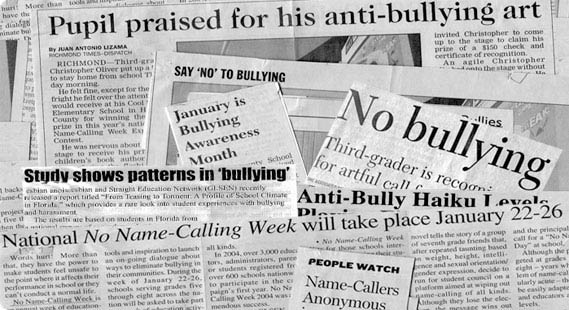Key Resources
- Analysis: The First Amendment and School Policies on Harassment and Bullying
- NCAC to Dept. of Ed: Vague Definition of Harassment Under Title IX Threatens Student Free Speech
- NCAC testimony to US Commission on Civil Rights: Vague and Overbroad Definition of Bullying Threatens Students’ Constitutional Rights
- NCAC to Dept. of Ed: Proposals to Regulate Private Online Speech Would Run Afoul of the First Amendment
The problem of school bullying and harassment is a serious issue that deserves national attention. The questions that arise concern the approach to be taken, not the mission itself. There is little doubt of the need to prevent bullying and harassment in schools, especially when the targets are young and vulnerable—which is true, for example, of many LGBTQ high school students.
NCAC fully supports the efforts of schools officials to prevent such behavior through educational programs, counseling, parental involvement, and other means. We are, however, concerned about punitive measures that penalize pure speech, and about the use of laws prohibiting discrimination on the basis of race, sex, national origin, and disability. These approaches may not be the most effective way to address the issue, and have the potential to undermine other rights that are essential to advance the cause of equality.
Some federal and state efforts stretch the definition of harassment to encompass protected speech and threaten the delicate balance the Supreme Court has struck between the right to equality and the First Amendment right to free speech. This is likely to create confusion and avoidable litigation, with potentially deleterious effects for civil rights law, First Amendment jurisprudence, and the students it seeks to benefit.
Approaches that threaten free speech rights endanger the cause of equality as much as free speech. The civil rights movement, and every other movement to expand equality rights, has succeeded precisely because advocates vigorously exercised their First Amendment rights to protest, demonstrate, petition government, and speak freely—even to those to whom their message was unpopular, controversial, and often deeply offensive. To undermine that critical right is to put at risk the very equality goals anti-harassment regulations seek to enforce.
It is not only possible but legally mandated for public institutions to recognize both students’ right to free speech and their right to an educational environment free of invidious discrimination.


